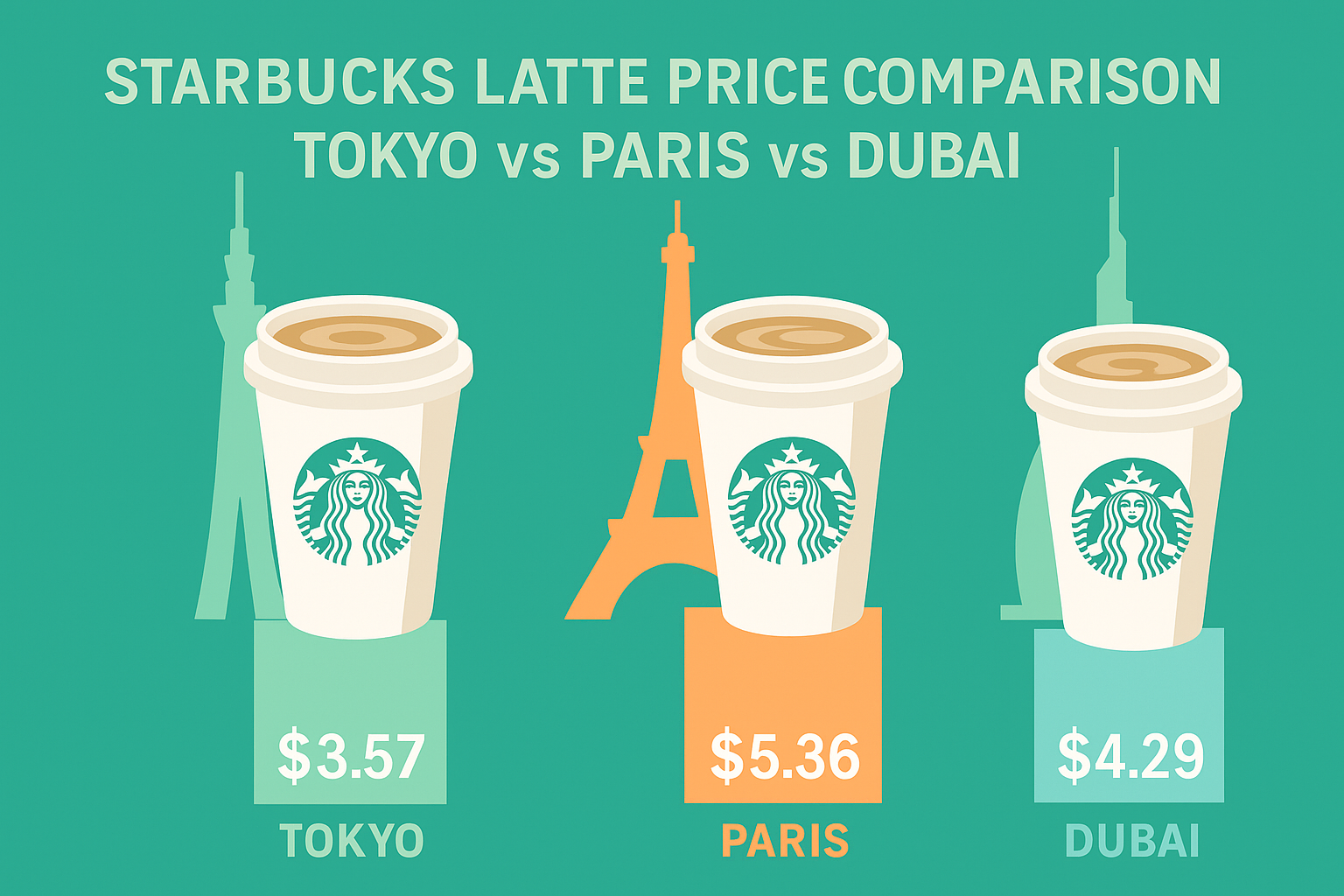—An Economist’s Perspective—
Executive Summary
The Starbucks Tall Latte serves as a surprisingly effective proxy for urban cost structures and purchasing power disparities. Based on recent global price surveys, a Tall Latte costs $3.57 in Tokyo, $4.29 in Dubai, and $5.36 in Paris. This ranking highlights not only the differences in labor and real estate costs but also how global brands adapt pricing to local markets. In essence, Tokyo is the most affordable, Paris the most expensive, and Dubai occupies a middle ground.
1. Price Comparison
| City | Tall Latte Price (USD) | Relative Level |
|---|---|---|
| Tokyo | $3.57 | Lowest price |
| Dubai | $4.29 | Mid-range |
| Paris | $5.36 | Highest price |
Sources: Global Starbucks Latte Price Index (2024–2025 surveys).
2. Key Drivers of Price Differentials
2.1 Labor and Real Estate Costs
- Paris: High wages, strict labor regulations, and elevated commercial rents are embedded in retail pricing. Starbucks is often viewed as a premium, foreign lifestyle brand, allowing a pricing premium.
- Tokyo: Although wages are rising gradually, retail and supply chain efficiency help keep menu prices relatively moderate. Starbucks is positioned as an everyday café rather than a luxury indulgence.
- Dubai: Costs reflect both expatriate-driven wage dynamics and prime retail real estate. However, the absence of certain taxes and a competitive café landscape keeps Starbucks below Paris levels.
2.2 Market Positioning and Consumer Perception
- In Paris, Starbucks appeals to consumers seeking an “imported American experience,” commanding premium prices.
- In Tokyo, Starbucks competes with local chains and independent cafés, requiring price sensitivity.
- In Dubai, Starbucks benefits from strong brand recognition among tourists and expatriates, balancing affordability with exclusivity.
2.3 Currency and Purchasing Power Parity (PPP)
- When measured in USD, Tokyo appears cheap due to yen depreciation and a relatively controlled domestic cost base.
- Dubai’s dirham, pegged to the USD, reflects real input costs more directly.
- Paris prices, quoted in euros, stand high even after currency conversion, reflecting Europe’s broader cost environment.
3. Broader Economic Insights
- Everyday Goods as Inflation Signals
Coffee prices capture shifts in global supply chains (Arabica futures, milk, and logistics costs) and domestic wage pressures. Monitoring such items gives early hints of inflationary trends. - Global Brand Strategy
Multinationals like Starbucks tailor pricing to local purchasing power and brand positioning. This creates measurable differences that mirror broader macroeconomic structures. - Consumer Burden and Real Incomes
A $5.36 latte in Paris may be sustainable relative to local incomes, yet its symbolic value reinforces perceptions of high European living costs. Conversely, Tokyo’s lower price reflects both consumer price competition and lingering deflationary tendencies.
4. Conclusion
The Starbucks Latte Index across Tokyo, Dubai, and Paris illustrates how a standardized global product reveals local economic realities. Tokyo offers affordability, Dubai reflects a hybrid of global connectivity and regional affluence, and Paris epitomizes premium pricing driven by structural costs. For economists, such micro-level comparisons are not trivial: they provide tangible insights into inflation, purchasing power, and the global strategies of multinational firms.


